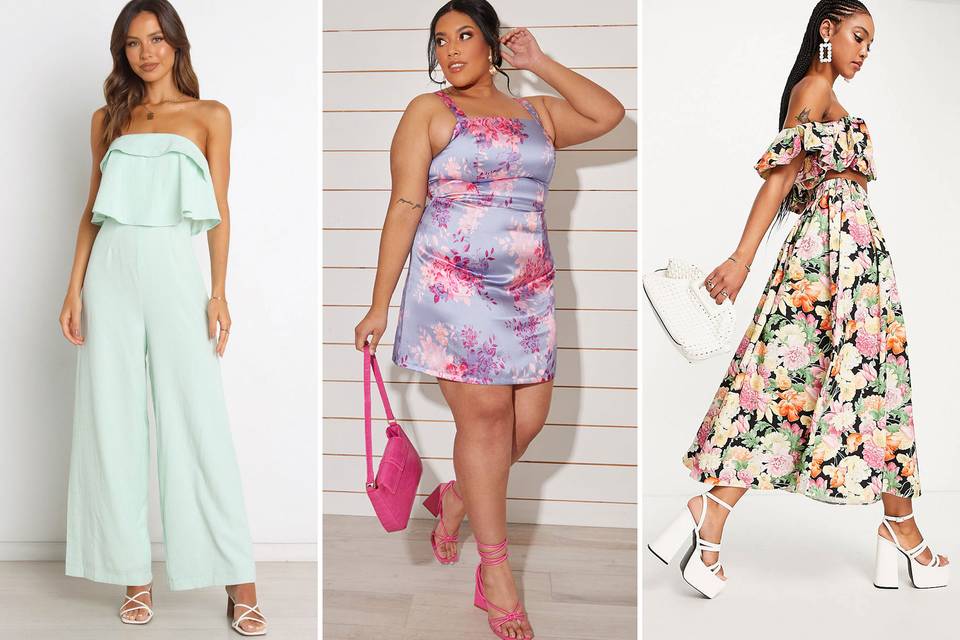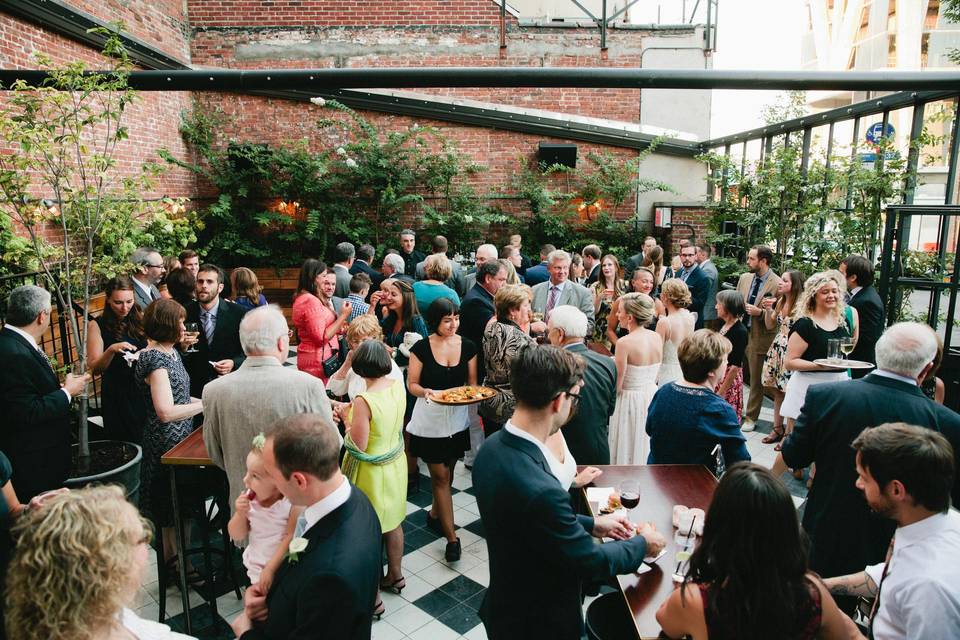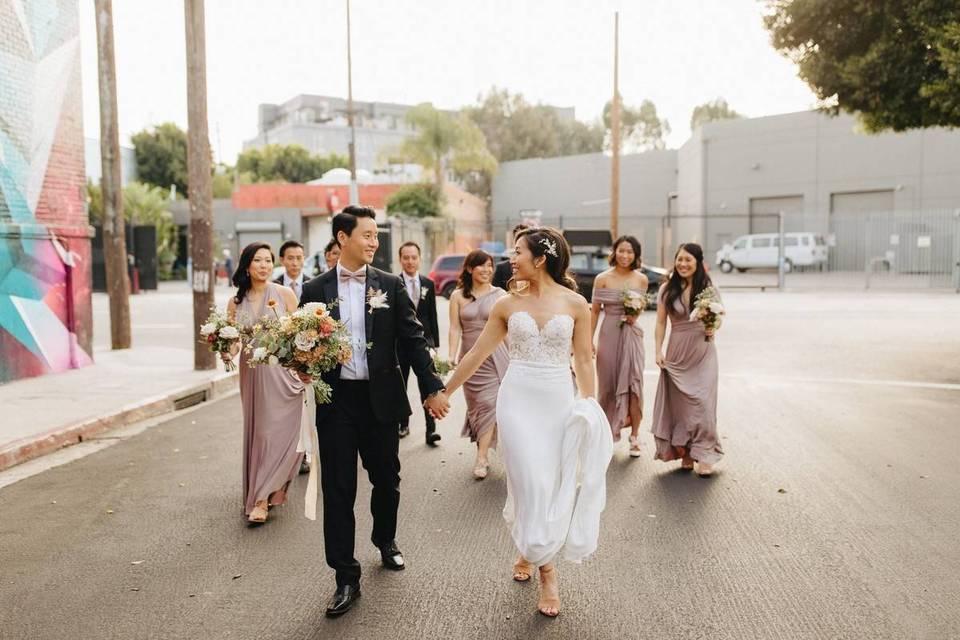What to Wear to an Indian Wedding As a Guest
Anyone who is attending an Indian wedding for the first time will be faced with the perplexing question: What do you wear to an Indian wedding as a guest? We're here to help you figure it out.
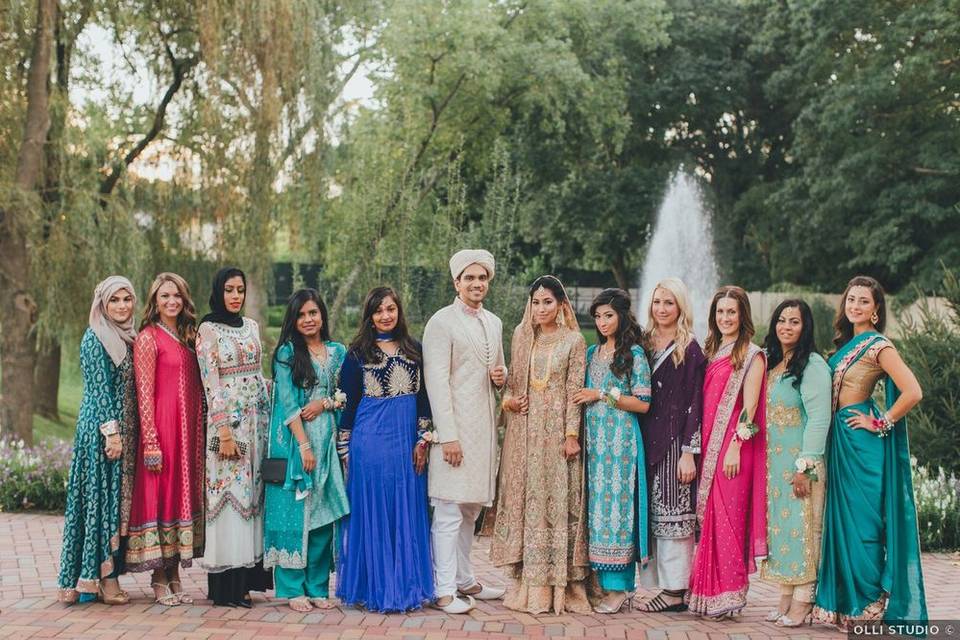
So, you've received an invitation to a friend or relative's Indian wedding ceremony—get excited! These events are always bursting with celebratory energy, but let us go ahead and answer your first question: What to wear to an Indian wedding as a guest? While there will probably be some dress code cues on the wedding invitation, it's helpful to brush up on the general traditions and customs of guest attire at Indian weddings on your own time. To make it easy for you, here are some things to know about Punjabi weddings, Hindu weddings, and how to make sure you're being respectful of Indian culture.
Prepare for multiple ceremonies and events.
Indian weddings generally are comprised of many events that take place over the course of two or three days—and the wedding ceremony is only one component. At a minimum, your Indian-American friends or relatives will probably have a traditional Indian ceremony that represents the faith of their family back home, likely Sikh, Hindu, or Muslim. In addition, many couples who grew up in the States will want to also have an Americanized ceremony that will look and feel pretty familiar. Other common pre-wedding events include the Haldi ceremony, the Mehndi ceremony (a female-only celebration of the bride that focuses on the ceremonial henna application), and the Sangeet, which is a night of singing and performances for the couple, often including choreographed Bollywood dancing. The couple will let you know exactly which events you're invited to attend, but we suggest preparing your wedding guest attire for at least these two of them just in case.
Consider classic Indian wedding outfits.
If you're struggling with what to wear to an Indian wedding as a guest, one of the best routes is wearing traditional Indian clothes. For women, that includes any of the following:
- A colorful saree, which is an elaborately tied drape of fabric that is worn from the shoulders to the ankles, covering one or both of your arms. Extra fabric is normally left free and can be used to cover your head during the religious ceremony.
- A lehenga is another popular option, but unlike a saree, this is typically a two-piece outfit consisting of a crop top and full skirt.
- A sharara, which is a type of suit featuring wide-leg, palazzo-style pants and a matching tunic top (sometimes called a kurti or kurta). The set is typically decorated with sparkly beading, brocade patterns, and embroidery.
Men can wear either a long-sleeved tunic (kurti) or a knee-length jacket (called a sherwani) with matching pants. Both men and women’s clothes come in dazzling, bright colors with lots of patterns, embellishments, and prints. If you live in an area with a large Indian-American population, try a local Indian, Pakistani, or Nepalese market, which will likely sell clothing. Whatever you do, don’t nag the bride or the groom about attire! Trust us, they’re swamped with other obligations, so try to navigate this part on your own or consult with a bridesmaid or other wedding party member if you're genuinely unsure about what to wear.
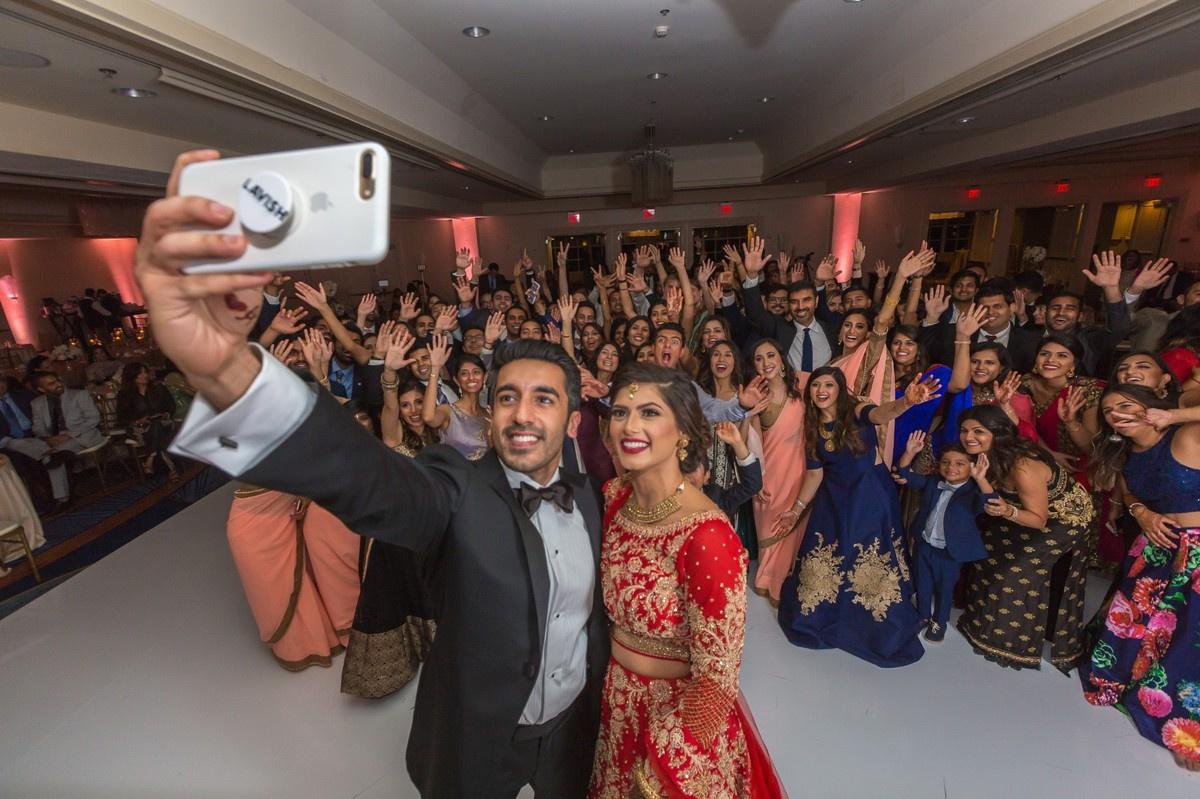
Be respectful by wearing color and covering your head.
While Western society regards the color white as a symbol of purity, it’s actually associated with funerals in India and South Asia, so avoid showing up in anything white on the wedding day (not to mention wearing white to someone else's wedding is never a good idea). Red is the traditional color for Indian wedding dresses, so women shouldn't wear it out of respect for the bride. Lastly, black is also viewed as an unfavorable color for Hindu ceremonies, so we recommend avoiding it—but just about every other color of the rainbow is fully acceptable for guests!
Both men and women will also want to be sure to bring something to cover their heads during the ceremony, especially if the wedding will be Sikh or Hindu. Women wearing a saree can use their drape fabric or bring an extra scarf, called a dupatta. Men can bring a handkerchief to cover their heads for the ceremony. If the ceremony takes place in a house of worship, expect that you may also have to take off your shoes before entering as well.
Cover up and avoid revealing clothing.
Traditional Indian wedding guest attire covers the shoulders, legs and sometimes all of the arms, so if you’re not going for authentic Indian outfits, your Western clothes should be just as modest. Cleavage, mini dresses, and revealing clothing that clings to your body is not acceptable if you're wondering what to wear to an Indian wedding as a guest. For men, classic suits or long-sleeve dress shirts and trousers are the most appropriate options.
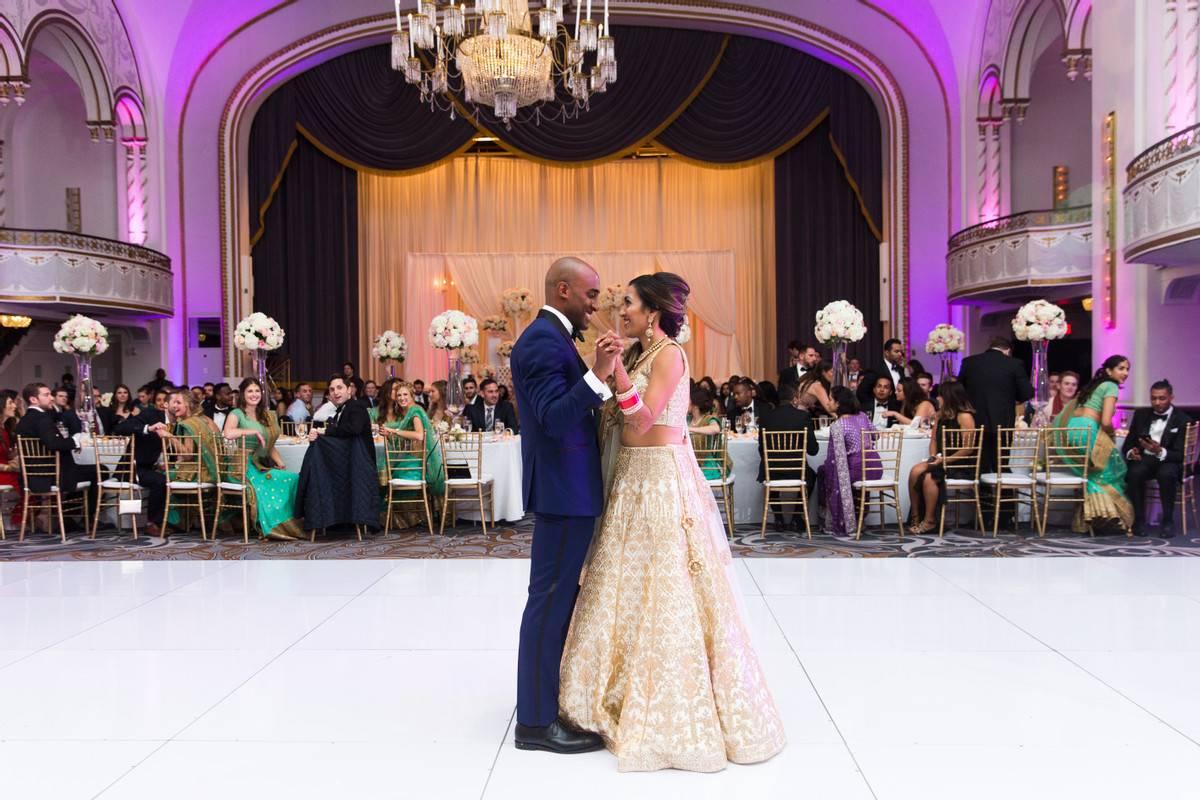
Be comfortable.
If you’re with the groom, this is especially important when deciding what to wear to an Indian wedding. During the baraat, the groom is paraded to the ceremony on a horse while his friends and family perform a processional dance to meet the bride’s side, so you’ll be on your feet. For Sikh weddings, guests sit on the floor, so you’ll want to be sure that your attire isn’t too binding or too short to allow you to sit cross-legged for an extended period of time.
Beyond having to walk or sit, if this is your first Indian wedding, you may be surprised by the length of the actual ceremony, which is about two to three hours, so wear something you won’t be aching to get out of. You can also consider wearing something simpler for the ceremony and jazzing it up for the wedding reception, as it’s common for guests at Indian weddings to do an outfit change. Last but not least, be prepared for the dance floor by wearing dressy but comfortable shoes that you can easily move around in.
Don't be afraid to accessorize.
Even if you don’t choose to wear traditional Indian wedding attire, bring out your best jewelry and body adornments—bling is a big component of Indian fashion. For women, this could include bangle bracelets, ornate earrings, beaded handbags, or a bindi, which is sticker worn on your forehead between your eyebrows. "I think there is a myth that if you wear a bindi that other Indian people will be offended," said Tejel Patel of Ambiance by Tejel in Santa Clara, California. "We love to see other cultures taking ours on."

